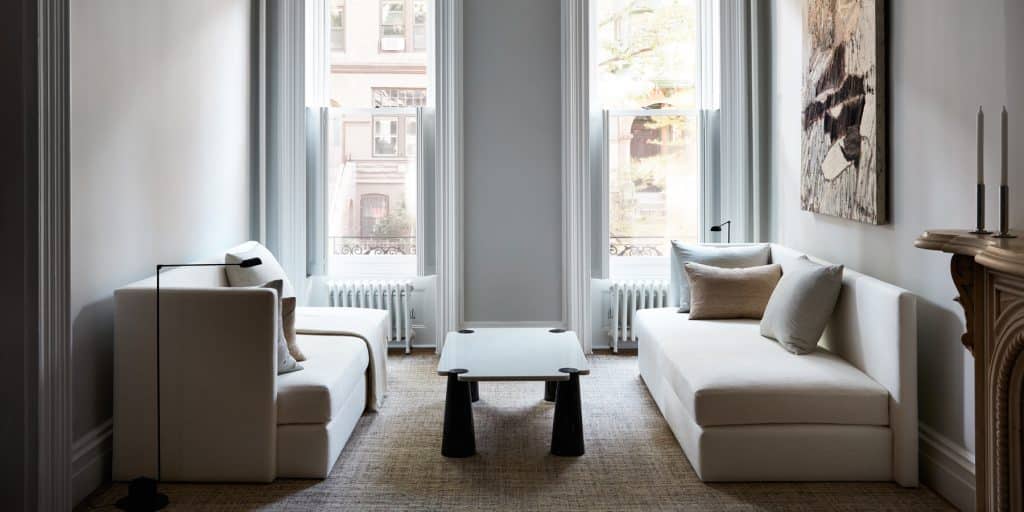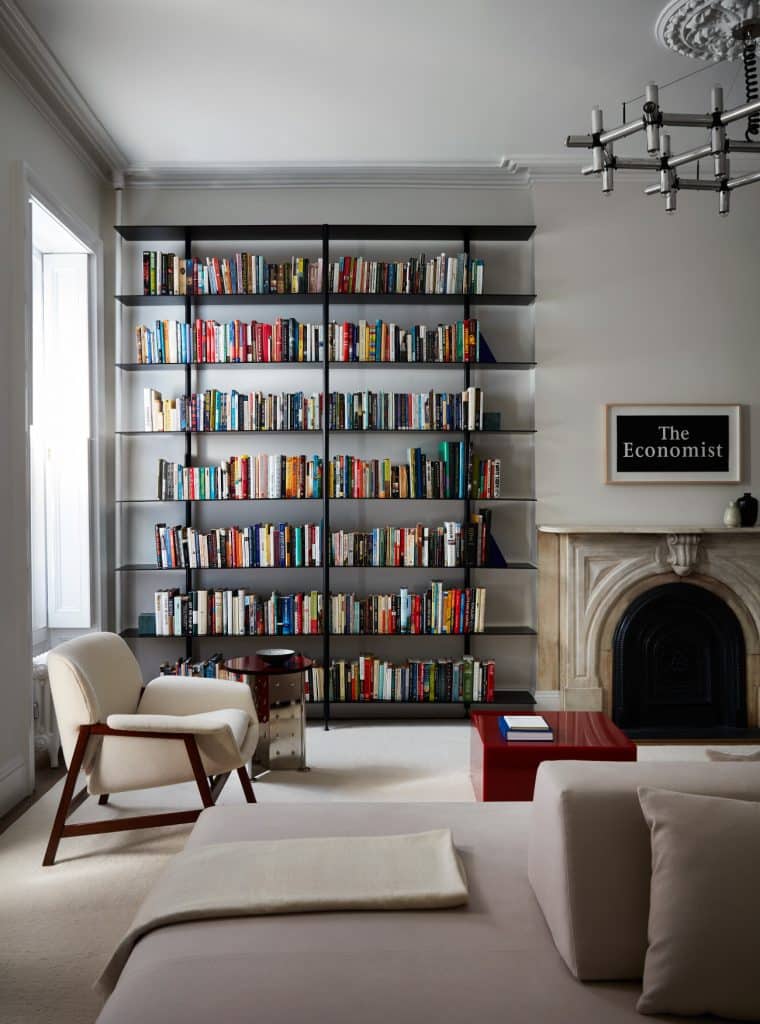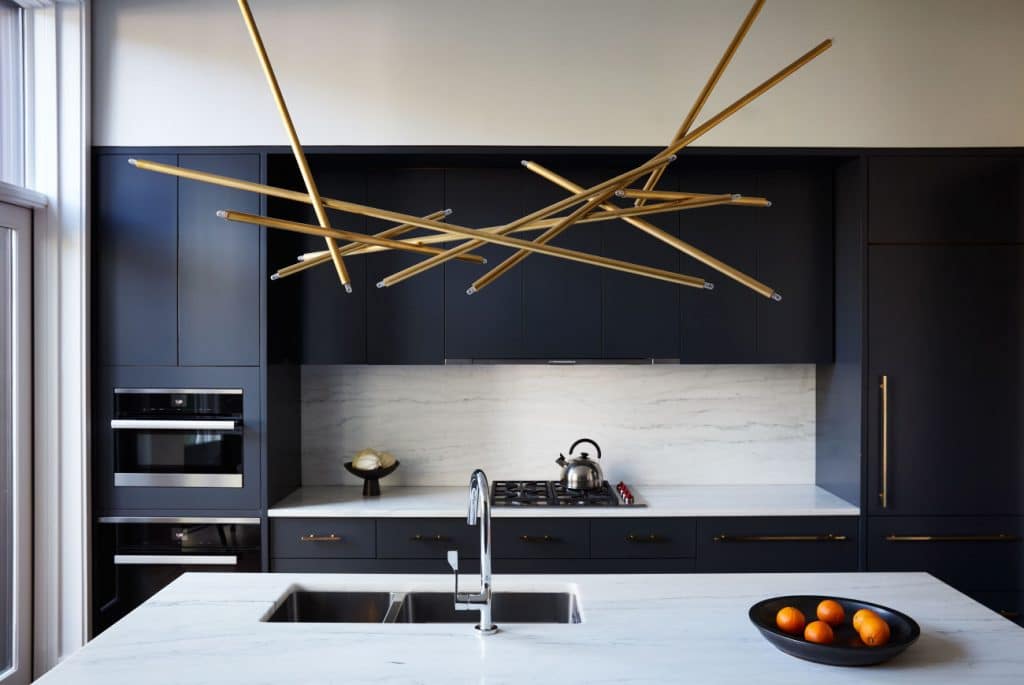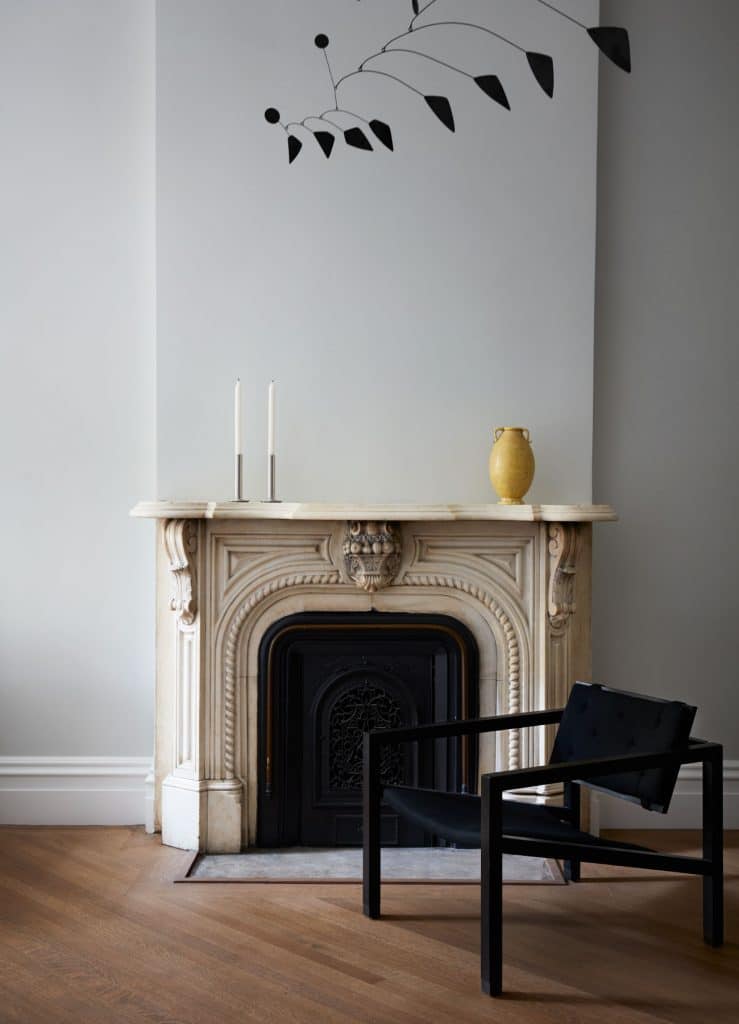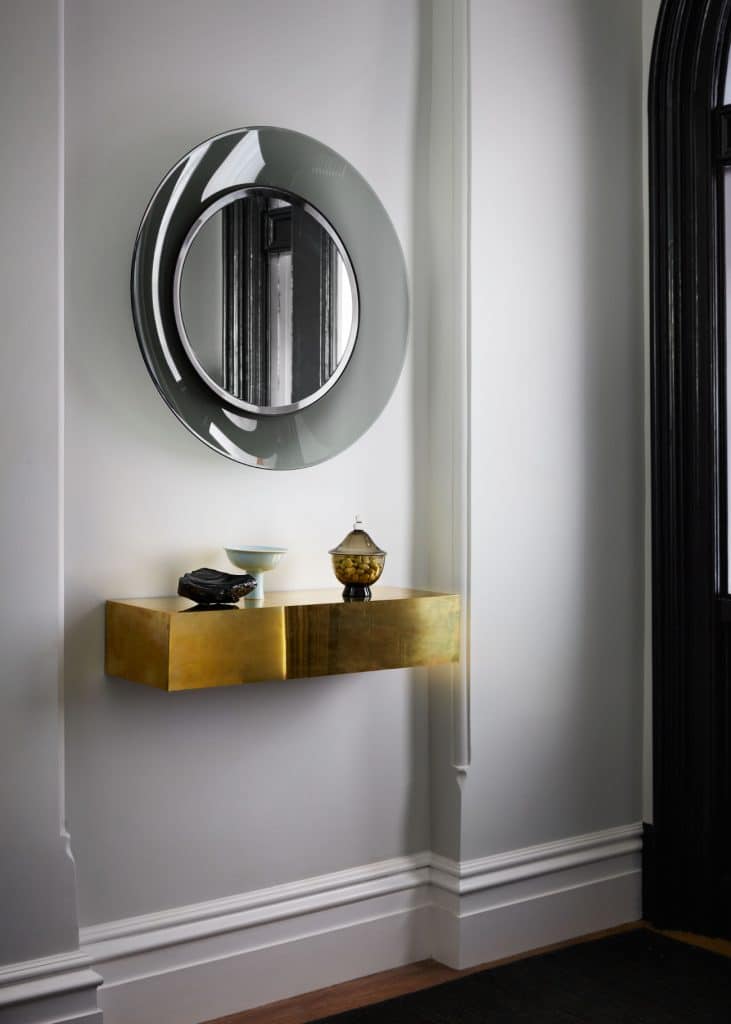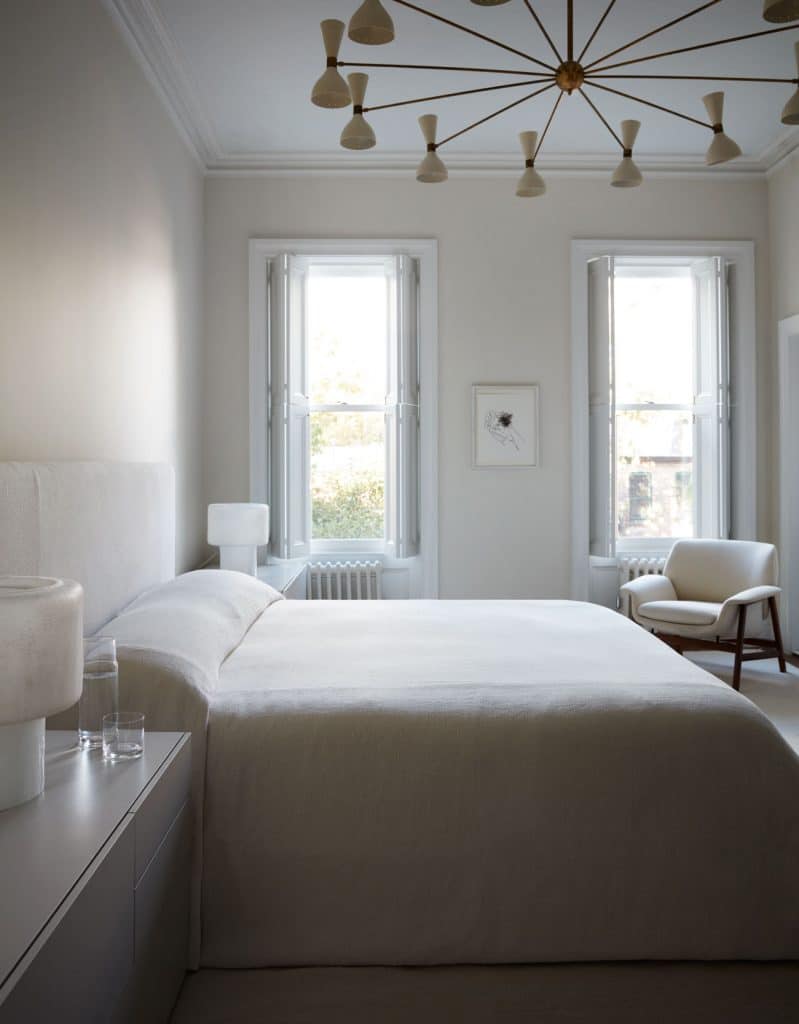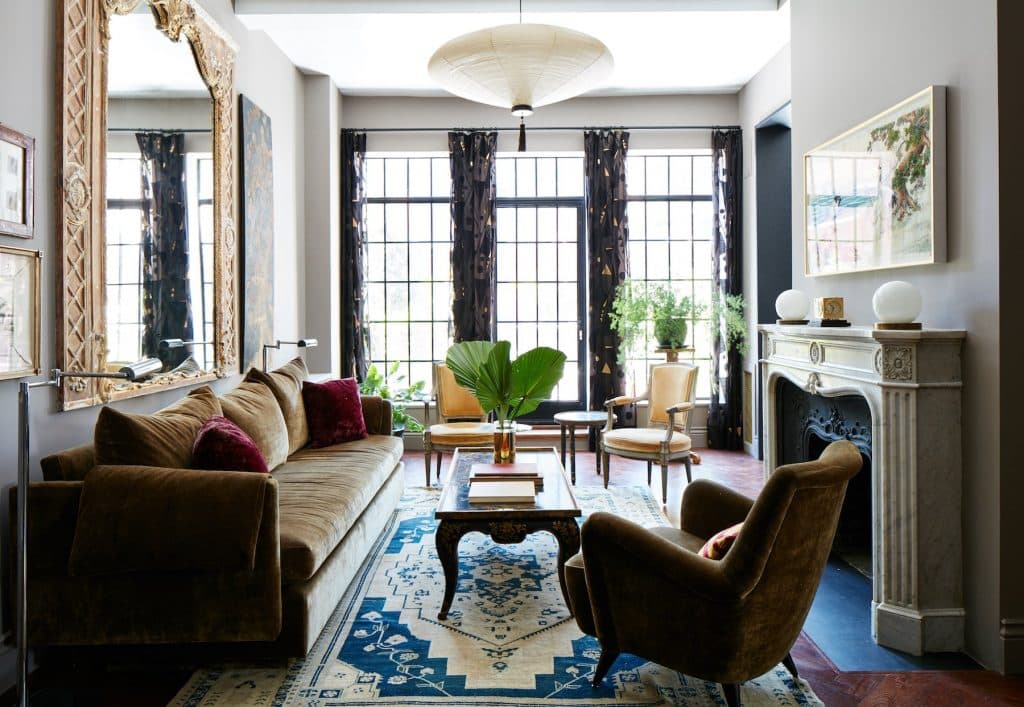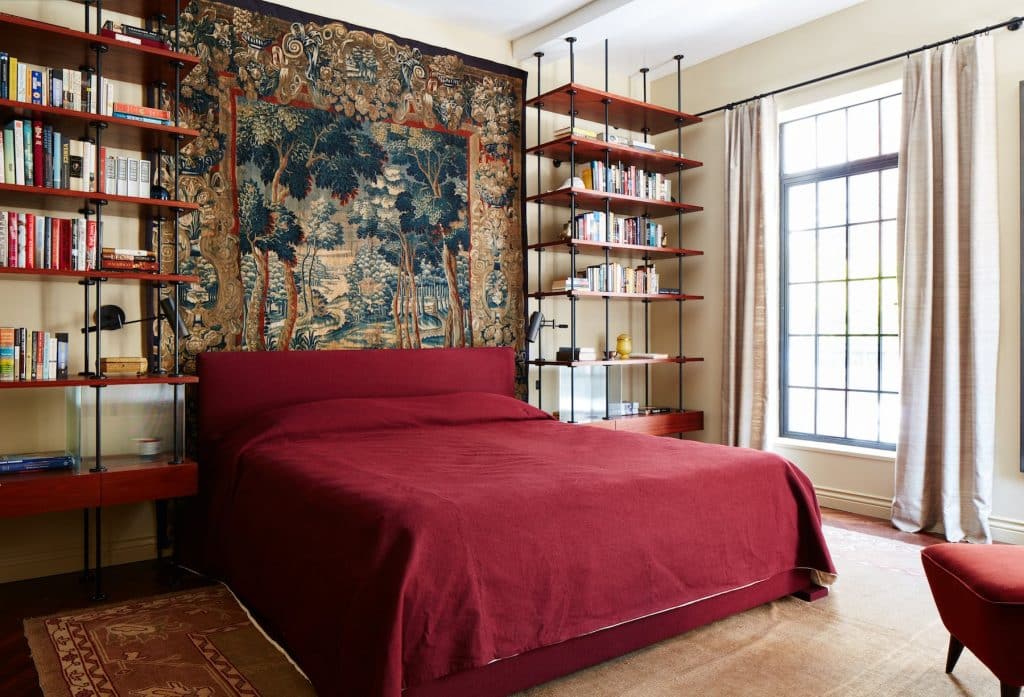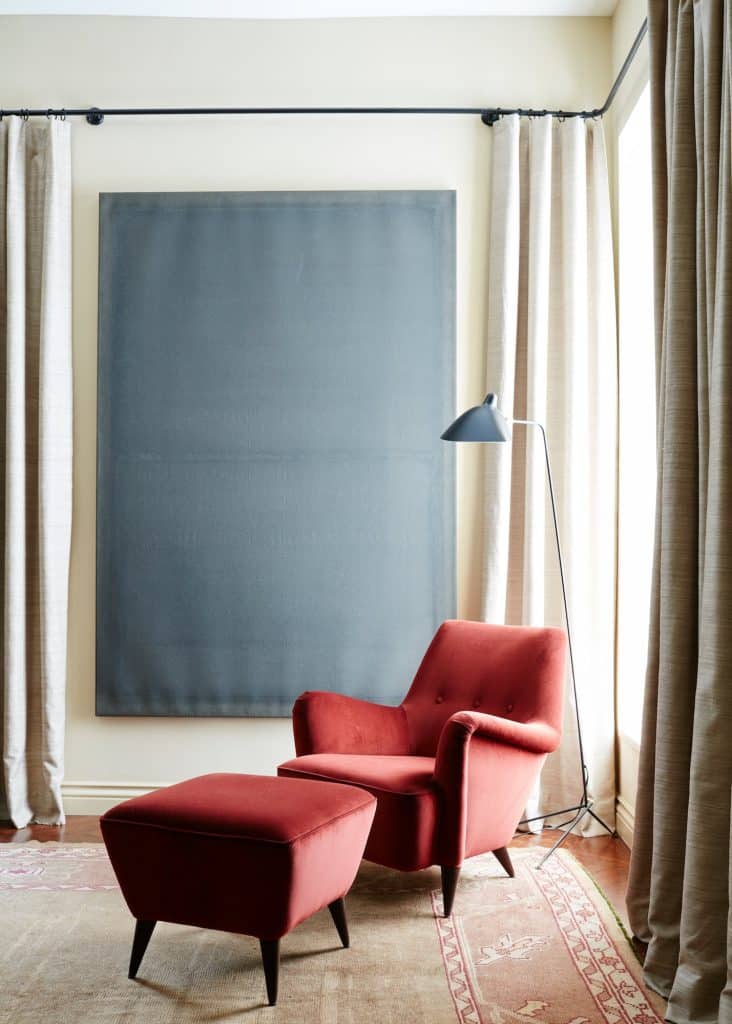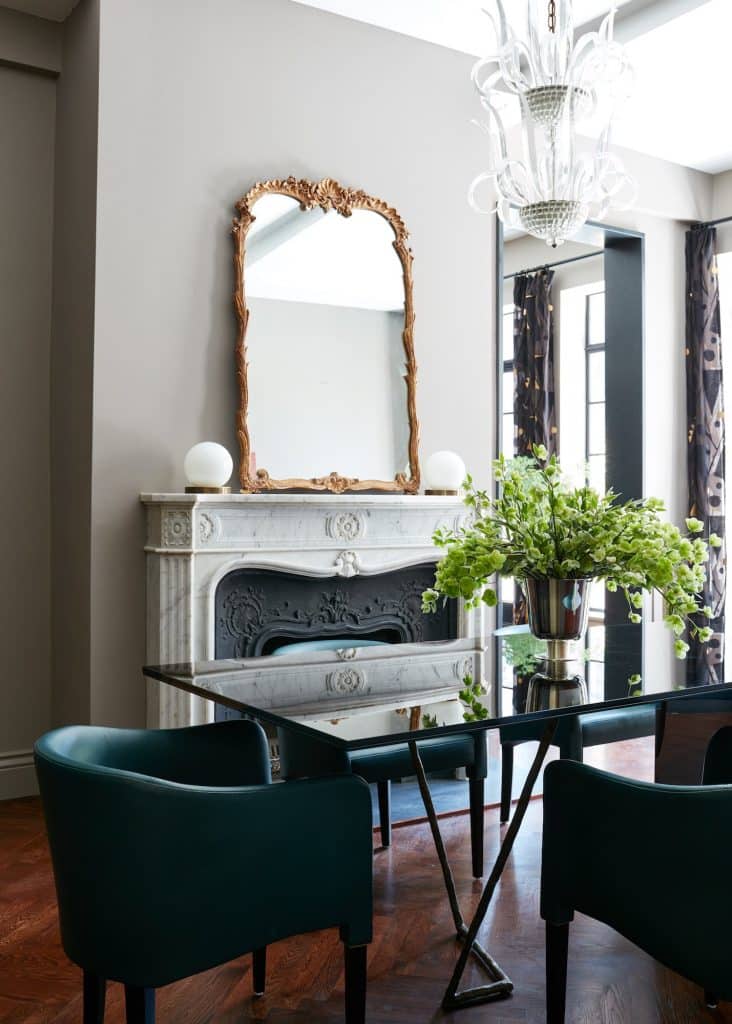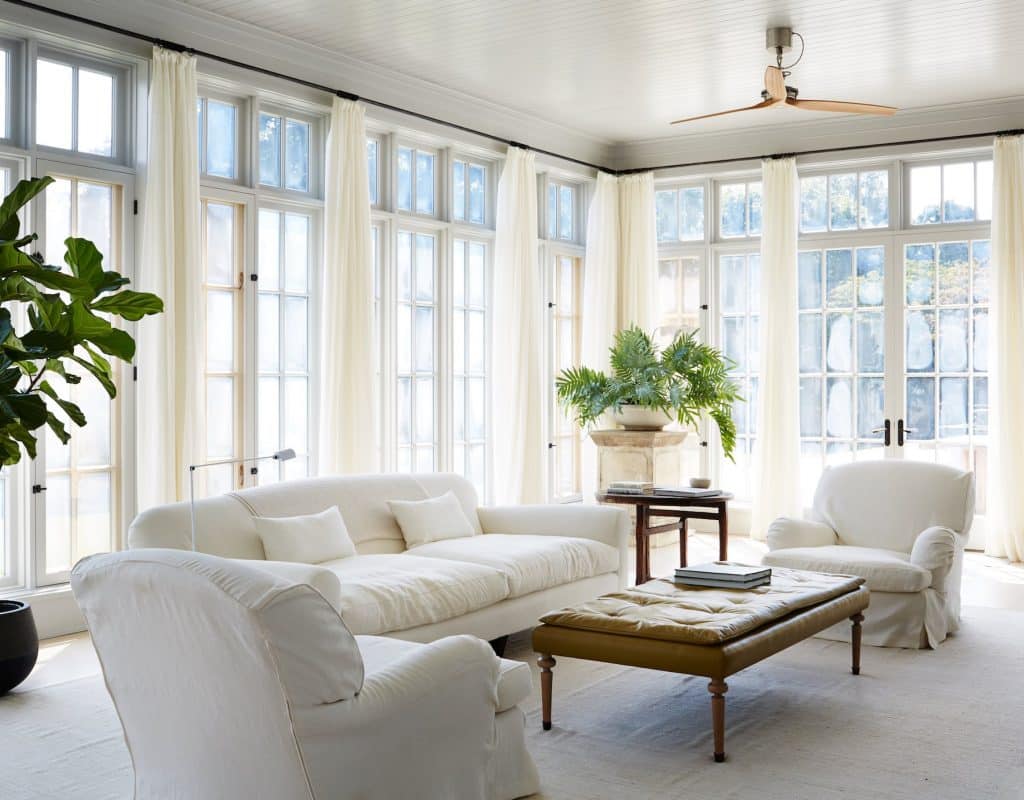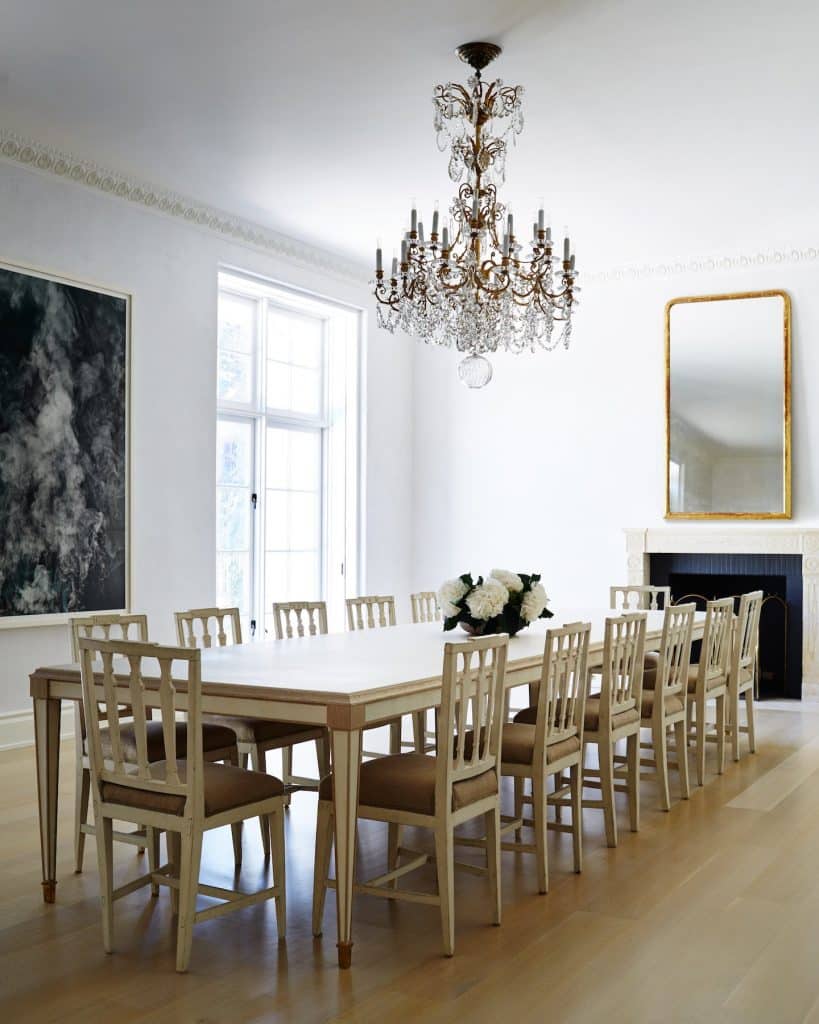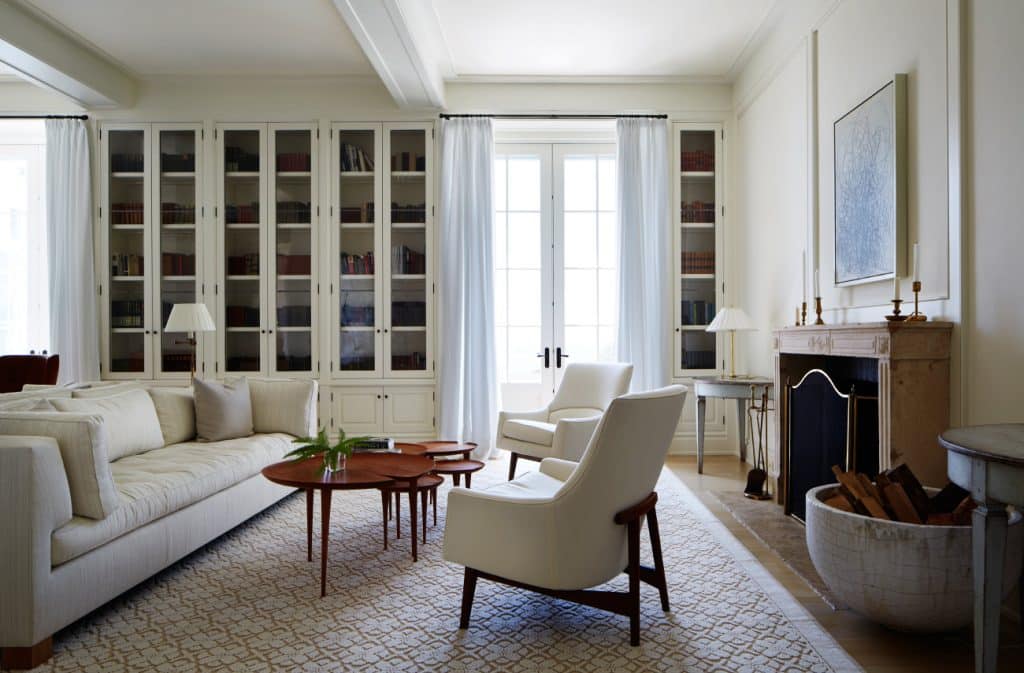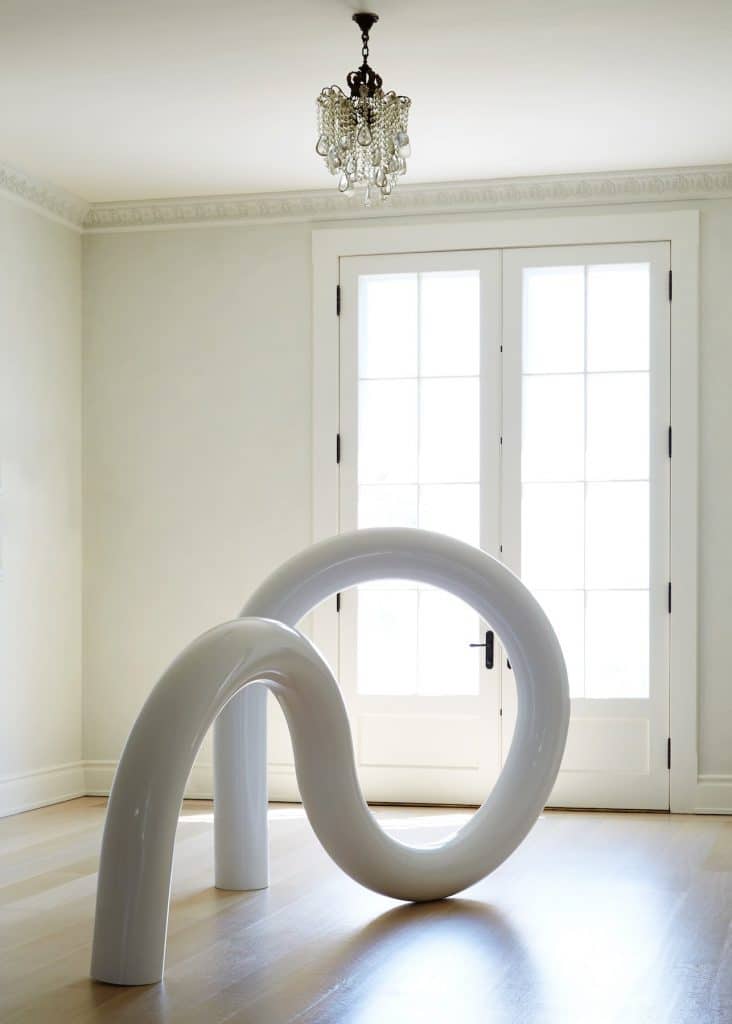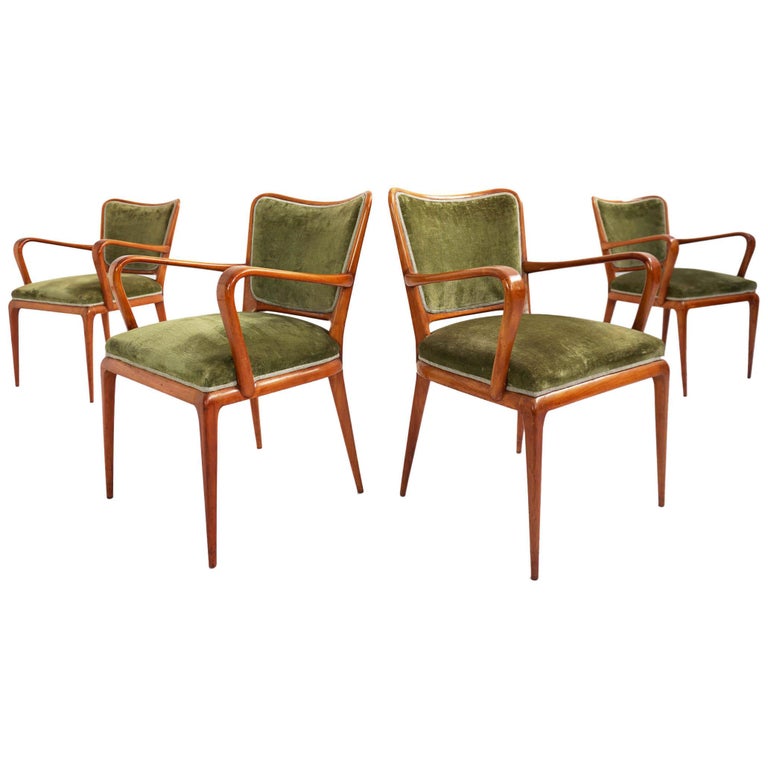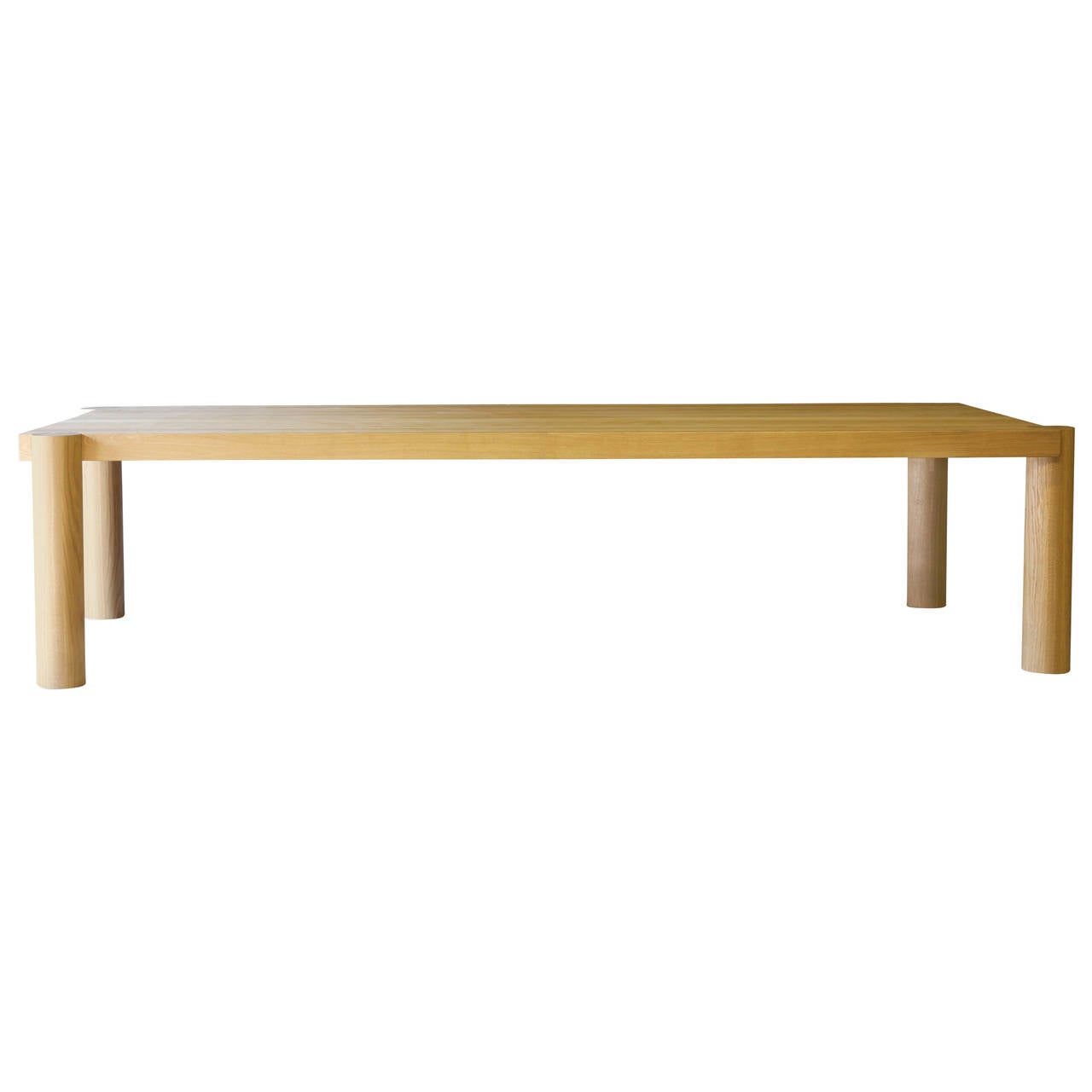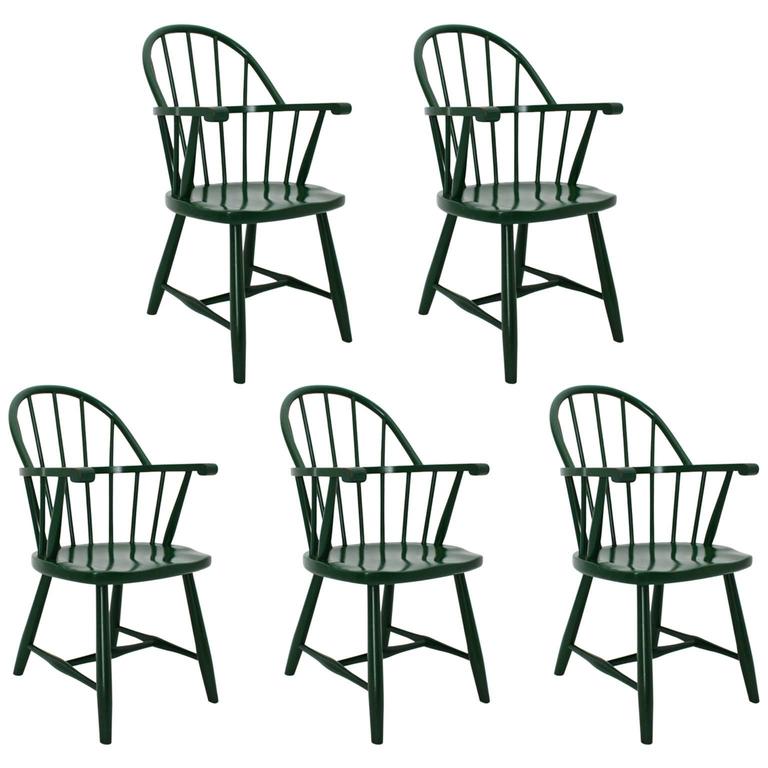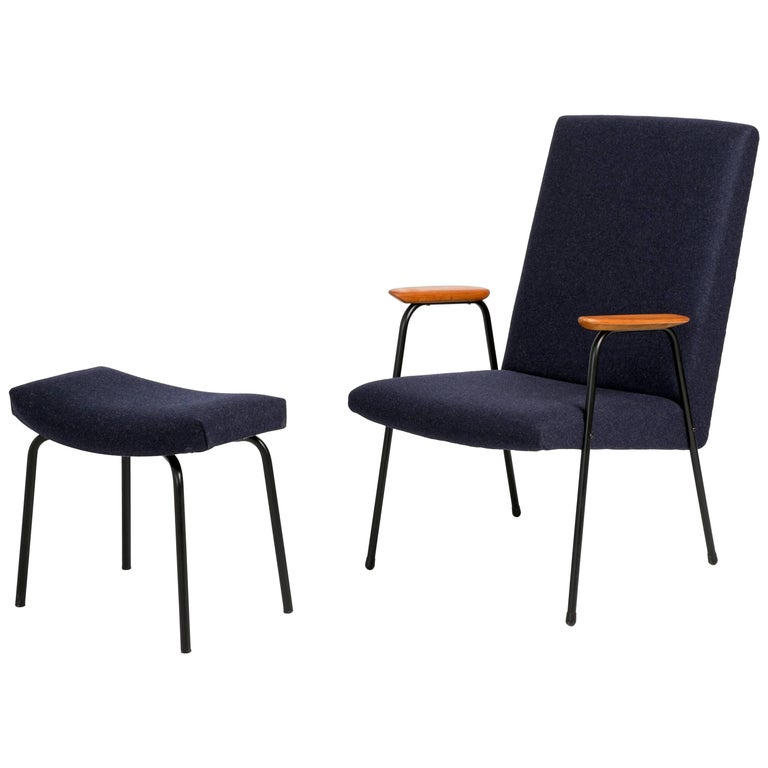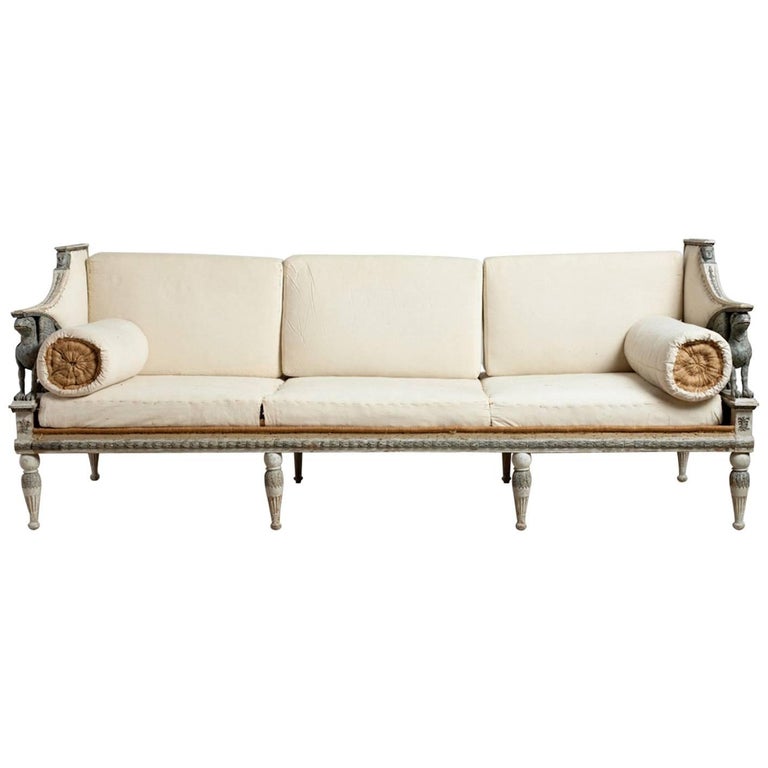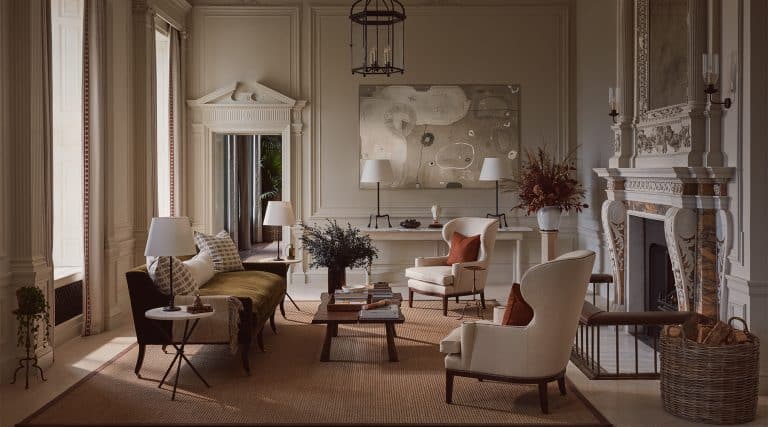
December 16, 2018Billy Cotton designs both interiors and furniture, but he only occasionally mixes the two. Top: The living room of a Park Slope, Brooklyn, townhouse by Cotton features a pair of his Yin and Yang sofas and an Angelo Mangiarotti coffee table from Side Gallery.
In 2010, Billy Cotton got a call that changed his life. Cindy Sherman, one of the grandees of the contemporary-art world, wanted to know if the then-fledgling interior designer would help her spruce up her old farmhouse on eastern Long Island. “I wasn’t going to turn that down,” says Cotton, who spent much of the next two years working with Sherman as builder, conjurer and comrade, creating a lively mix of old furniture, new furniture, flea-market finds and miscellaneous artworks — some valuable, some not.
What you won’t find in Sherman’s house is anything with Cotton’s name on it. Although he has a thriving furniture- and lighting-design business, he says, “I rarely use my own pieces when I do interior design. When I’m working for clients, it’s about them, which is very different from sitting down with a piece of paper to see what I want to make. They’re separate practices.”
Indeed, his own products, which are now sold on 1stdibs, have a consistent aesthetic. His Joinery Collection, in which he draws the eye to how components (such as table legs and table tops) connect, displays what might be called a careful quietness. His interior designs, by contrast, run from severely minimalist to shamelessly maximalist, depending on the client’s needs and the architectural context.
The separate practices both co-exist in Cotton’s downtown Brooklyn studio. In one room, he is working on a new collection of furniture and lighting — “Right now we’re in the heat of prototyping,” he says. In another, he is designing the interiors of a historic house in Chicago’s Lincoln Park and a ground-up contemporary house in Malibu. The two projects couldn’t be more different, which is fine with Cotton. “People don’t really come to us and say, ‘I want what you did for so-and-so.’ We tend to attract creative types, who can see beyond the surface aesthetic and who understand that the work we’re doing is really specific to the person and the place. It’s a very self-selecting group.”

In the library, a Charlotte Perriand desk from Magen H Gallery is topped with a Tolomeo desk lamp designed by Michele De Lucchi and Giancarlo Fassina for Artemide and paired with a chair by Billy Cotton. The waste basket is by Richard Galef, and the area rug is by Holland & Sherry.
One client needed help making a castle-like Connecticut mansion more modern; the house’s traditional details “made her uncomfortable,” says Cotton. But he couldn’t erase the architecture entirely. So he imposed what he calls a “monotonous palette — it’s every shade of white that there could possibly be.” To warm up the floors visually, without resorting to traditional carpet patterns, he commissioned a series of embroidered Cogolin rugs. A Cogolin, he says, “is a little more formal than a sisal but still has some tactility to it.” When it came to furniture, he used classic upholstered pieces that do their jobs unobtrusively. His boldest decision was persuading the client to buy a powder-coated-steel sculpture by Carol Bove and give it an entire room, a decision he says was “conceptually risky” but, given the simplicity of the artwork, “aesthetically safe.”
On rare occasions, Cotton says, his furniture and lighting do find their way into his interior design jobs. A couple of years ago, a woman renovating a house in Brooklyn asked CWB Architects, the firm she was working with, to order one of Cotton’s brass-tube Pick Up Stick chandeliers for her kitchen. Cotton built a wooden mock-up and brought it to the site, to tweak its dimensions prior to fabrication. The woman was living in the house with her husband and their kids, but, Cotton remembers, “there was no furniture. She said, ‘I love the house empty, and I’m petrified to put anything in it.’ Which I can understand.” So Cotton built her one piece at a time, starting with a square dining table from his Joinery Collection with brass connectors linking the top to the legs. Then, he designed a pair of clean-lined sofas, which face each other like yin and yang so husband and wife “can read the Sunday paper together.” Next, he added powder-coated-metal bookshelves and a leather chair that looks like a mid-20th-century classic but that Cotton designed in the 21st. Each piece is self-controlled, occupying space without overwhelming it. Floors and walls are mostly bare. “My goal was to make sure that the spirit of the empty house remained after we put in furniture,” Cotton says.

In the dining room, a vintage mobile hangs over a table from Cotton‘s Joinery Collection, which is surrounded by Giò Ponti for Cassina 646 Leggera chairs.
He took the opposite approach for husband-and-wife scientists who were combining two small Manhattan co-op apartments. “The place had no real architecture, so I got to create my dream of an Upper East Side apartment,” he says. Cotton lowered all the window sills, to create what looked like rows of doors opening onto the surrounding terraces, and added reclaimed marble fireplaces from the Plaza Hotel. Behind the couple’s bed, he hung an ornate tapestry, but he designed “an achingly modern kitchen.” Altogether, he says, “we created our own language.”

This bedroom in the Southport, Connecticut, home includes a pair of Danish mid-century chairs and a tufted bench.
Cotton always loved design but never expected to make a career of it. Growing up in Vermont, he was such a bad student that he blew off college. Instead, he went to Paris, where he worked at the Clignancourt flea market helping dealers communicate with English-speaking buyers. Eventually, he decamped to New York, where he studied Russian history at Hunter College and then lighting and furniture design at the Pratt Institute. While at Pratt, he started a business doing odd jobs for Manhattanites. He called the company Custom Resource, a deliberately vague name. “I was just a young broke person in New York,” he explains, “so I’d fix toilets. I’d make curtains. I’d build furniture.” Some of his clients were in the design world, and he learned a lot from them. “I was laboring, but at the same time I was listening intently,” he recalls. Then, Cindy Sherman, who had seen some work he had done for a friend of hers, called. “The rest is kind of history,” says Cotton. “It was a beautiful experience — a dream.”
Cotton’s work ranges from the fantastical to the deeply practical. In the latter category is the job he is doing for his own Manhattan co-op, redesigning the building’s lobby and hallways. “If it’s going to get a lot of wear and tear, I’m not going to do something that’s going to be precious or something that’s going to become dated,” he says. At the same time, his new product line, which will be released in May, is “more ornamented, more decorative,” he says, than the pieces he’s done before. Musing about his products’ becoming more like his interior design work, he notes, “Maybe I’m starting to merge my two lives.”
